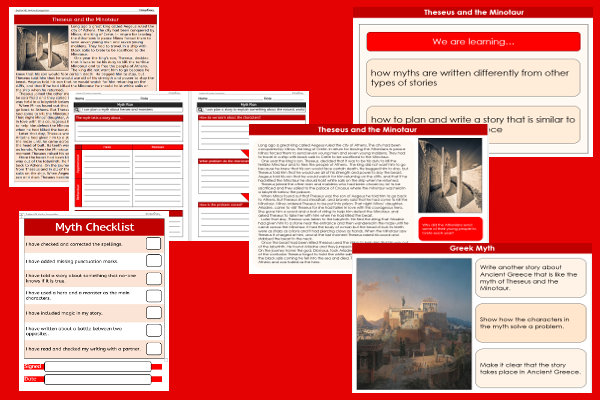Theseus and the Minotaur

This English teaching pack for Key Stage Two gets the children to investigate how to compose and present a narrative story based on the text features of a myth from Ancient Greece about a hero and a monster.
The class can explain how to structure writing to match the text features of myths to indicate the sequence of events and dilemmas faced by the main characters.
Download this teaching pack including a shared reading text classroom activities and an interactive presentation to investigate how to compose and present a narrative story based on the text features of a myth from Ancient Greece about a hero and a monster
Activities in this teaching pack include a shared reading text to identify the structure and format of myths based on a story from Ancient Greece, a template to plan a similar story about a myth with a hero and monster as the main characters and a worksheet to edit and redraft a written composition of a Greek myth.
The interactive presentation gets the children to explore how to compose and present a narrative story based on the text features of a myth from Ancient Greece about a hero and a monster.
This lesson is part of an English scheme of work to get the children to practise composing narrative stories to illustrate the structure and format of myths based on culture and traditions from Ancient Greece. There are teaching activities for shared learning, differentiated worksheets to support independent learning and interactive presentations to introduce concepts and key skills.
-

Theme Park Visit
Practise identifying and calculating the timing and duration of rides and events when visiting a theme park on a special family trip
-

Family Holiday Trips
Identify and record how to compose and publish recounts using adverbials of time and place to describe family holidays to different places in the world
-

Money Multiplication
Explain and model how to use standard written calculation methods to multiply money amounts in pounds and pence when solving number problems
-

Sport Teams
Explain and model how to use brackets and dashes to add extra information to sentences describing how to play sports and games as part of a team
